- ▶
- Heaters/Source
- ▶
- Agilent Heaters and SensorsMass Spectrometry, Scientific Supplies & ManufacturingScientific Instrument Services 5973 Source Heater Tamper Resistant Allen Wrench 5973/5975 Quad Sensor 5985 Source Heater Assembly Agilent Interface Heater Assembly 5971 Interface Heater

- ▶
- Reference Material on InstrumentationArticle - A High Temperature Direct Probe for a Mass Spectrometer Design of a Direct Exposure Probe and Controller for use ona Hewlett-Packard 5989 Mass Spectrometer SIS AP1000 AutoProbe™ SIS AP2000 AutoProbe™ - Description of System HPP7: Direct Probe Electronics Console HPP7: Direct Probe for the Agilent (HP) 5973/5975 MSD HPP7: HP Direct Probe Application Notes HPP7: Installation Directions for the Direct Probe HPP7: Side Cover for the HP 5973 MSD HPP7: Support HPP7: Probe Inlet System for the Agilent (HP) 5973 and 5975 MSD with Automatic Indexed Stops HPP7: Theory of Operation of the Direct Probe and Probe Inlet System Direct Thermal Extraction Thermal Desorption Application Notes Environmental Thermal Desorption Application Notes Food Science Thermal Desorption Application Notes Forensic Thermal Desorption Application Notes GC Cryo-Trap Application Notes Headspace Application Notes Purge & Trap Thermal Desorption Application Notes Theory of Operation of the AutoDesorb® System AutoDesorb Notes for SIS Dealers Adsorbent Resin Application Notes Installation of the Short Path Thermal Desorption System on Agilent (HP) and Other GCs Installation of the Short Path Thermal Desorption System on a Varian 3400 GC AutoDesorb® System Development Team Thermal Desorption Applications and Reference Materials Installation of the Short Path Thermal Desorption System - TD5 Part I - Design & Operation of the Short Path ThermalDesorption System Installation Instructions for the Model 951 GC Cryo-Trap on the HP 5890 Series GC Installation Instructions for the Model 961 GC Cryo-Trap on the HP 5890 Series GC Operation of the Model 951/961 GC Cryo-Trap SIS GC Cryo Traps - Theory of Operation NIST/EPA/NIH Mass Spectral Enhancements - 1998 version (NIST98) SIMION 3D Ion Optics Class Mass Spectrometer Source Cleaning Methods MS Tip: Mass Spectrometer Source Cleaning Procedures Mass Spec Source Cleaning Procedures Micro-Mesh® Abrasive Sheets Research Papers Using New Era Syringe Pump Systems EI Positive Ion Spectra for Perfluorokerosene (PFK) Cap Liner Information How do I convert between fluid oz and milliliters? Which bottle material should I choose? Which bottle mouth should I choose? The Bottle Selection Guide CGA Connections for Gas Tanks Chemical Reaction Interface Mass Spectrometry (CRIMS)

- TD
- ▶
- AccessoriesTD Supply Kit Desorption Tubes Adsorbent Resins Desorption Tube Needles Desorption Tube Seals Desorption System Fittings GC Cryo-Trap Extraction Cell TD Sample Loader Prepacked, Conditioned Desorption Tubes Desorption Tube Packing Accessories Stainless Steel Purge Heads Injection Port Liners Tenax TA Poster TD Application Notes Customer Service

- LiteratureApplication Notes Adsorbent Resins Guide Mass Spec Tips SDS Sheets FAQ MS Calibration Compound Spectra Manuals MS Links/Labs/ Organizations MS Online Tools Flyers on Products/Services Scientific Supplies Catalog About Us NextAdvance Bullet Blender® Homogenizer Protocols Micro-Mesh® Literature Instrumentation Literature Agilent GC/MS Literature SIS News / E-Mail Newsletter NIST MS Database - Update Notifications

- ▶
- Thermal Desorption Applications and Reference MaterialsDirect Thermal Extraction Headspace Environmental Food Science Applications Pharmaceuticals Forensic Note 103: EPA Method 325B, Novel Thermal Desorption Instrument Modification to Improve Sensitivity Note 102: Identification of Contaminants in Powdered Beverages by Direct Extraction Thermal Desorption GC/MS Note 101: Identification of Contaminants in Powdered Foods by Direct Extraction Thermal Desorption GC/MS Note 100: Volatile and Semi-Volatile Profile Comparison of Whole Versus Cracked Versus Dry Homogenized Barley Grains by Direct Thermal Extraction Note 99: Volatile and Semi-Volatile Profile Comparison of Whole vs. Dry Homogenized Wheat, Rye and Barley Grains by Direct Thermal Extraction GC/MS Note 98: Flavor and Aroma Profiles of Truffle Oils by Thermal Desorption GC/MS Note 97: Flavor Profiles of Imported and Domestic Beers by Purge & Trap Thermal Desorption GC/MS Note 95: Detection of Explosives on Clothing Material by Direct and AirSampling Thermal Desorption GC/MS Note 94: Detection of Nepetalactone in the Nepeta Cataria Plant by Thermal Desorption GC/MS Note 93: Detection of Benzene in Carbonated Beverages with Purge & Trap Thermal Desorption GC/MS Note 88: Analysis of Silicone Contaminants on Electronic Components by Thermal Desorption GC-MS Note 84: Vacuum Pump Exhaust Filters - Charcoal Exhaust Traps Note 83: Vacuum Pump Exhaust Filters - Oil Mist Eliminators Note 82: Vacuum Pump Exhaust Filters Note 80: Design, Development and Testing of a Microprocessor ControlledAutomated Short Path Thermal Desorption Apparatus Note 79: Volatile Organic Compounds From Electron Beam Cured and Partially Electron Beam Cured Packaging Using Automated Short Path Thermal Desorption Note 77: The Determination of Volatile Organic Compounds in VacuumSystem Components Note 75: An Apparatus for Sampling Volatile Organics From LivePlant Material Using Short Path Thermal Desorption Note 73: The Analysis of Perfumes and their Effect on Indoor Air Pollution Note 71: Flavor Profile Determination of Rice Samples Using Shor tPath Thermal Desorption GC Methods Note 65: Determination of Ethylene by Adsorbent Trapping and Thermal Desorption - Gas Chromatography Note 64: Comparison of Various GC/MS Techniques For the Analysis of Black Pepper (Piper Nigrum) Note 63: Determination of Volatile and Semi-Volatile Organics in Printer Toners Using Thermal Desorption GC Techniques Note 60: Programmable Temperature Ramping of Samples Analyzed ViaDirect Thermal Extraction GC/MS Note 57: Aroma Profiles of Lavandula species Note 55: Seasonal Variation in Flower Volatiles Note 54: Identification of Volatile Organic Compounds in Office Products Note 43: Volatile Organic Composition In Blueberries Note 42: The Influence of Pump Oil Purity on Roughing Pumps Note 41: Hydrocarbon Production in Pine by Direct Thermal Extraction Note 40: Comparison of Septa by Direct Thermal Extraction Note 39: Comparison of Sensitivity Of Headspace GC, Purge and Trap Thermal Desorption and Direct Thermal Extraction Techniques For Volatile Organics Note 38: A New Micro Cryo-Trap For Trapping Of Volatiles At the Front Of a GC Capillary Column Note 37: Volatile Organic Emissions from Automobile Tires Note 36: Identification Of Volatile Organic Compounds In a New Automobile Note 35: Volatile Organics Composition of Cranberries Note 34: Selection Of Thermal Desorption and Cryo-Trap Parameters In the Analysis Of Teas Note 33: Changes in Volatile Organic Composition in Milk Over Time Note 32: Selection and Use of Adsorbent Resins for Purge and Trap Thermal Desorption Applications Note 31: Volatile Organic Composition in Several Cultivars of Peaches Note 30: Comparison Of Cooking Oils By Direct Thermal Extraction and Purge and Trap GC/MS Note 29: Analysis Of Volatile Organics In Oil Base Paints By Automated Headspace Sampling and GC Cryo-Focusing Note 28: Analysis Of Volatile Organics In Latex Paints By Automated Headspace Sampling and GC Cryo-Focusing Note 27: Analysis of Volatile Organics In Soils By Automated Headspace GC Note 26: Volatile Organics Present in Recycled Air Aboard a Commercial Airliner Note 25: Flavor and Aroma in Natural Bee Honey Note 24: Selection of GC Guard Columns For Use With the GC Cryo-Trap Note 23: Frangrance Qualities in Colognes Note 22: Comparison Of Volatile Compounds In Latex Paints Note 21: Detection and Identification Of Volatile and Semi-Volatile Organics In Synthetic Polymers Used In Food and Pharmaceutical Packaging Note 20: Using Direct Thermal Desorption to Assess the Potential Pool of Styrene and 4-Phenylcyclohexene In Latex-Backed Carpets Note 19: A New Programmable Cryo-Cooling/Heating Trap for the Cryo-Focusing of Volatiles and Semi-Volatiles at the Head of GC Capillary Columns Note 18: Determination of Volatile Organic Compounds In Mushrooms Note 17: Identification of Volatile Organics in Wines Over Time Note 16: Analysis of Indoor Air and Sources of Indoor Air Contamination by Thermal Desorption Note 14: Identification of Volatiles and Semi-Volatiles In Carbonated Colas Note 13: Identification and Quantification of Semi-Volatiles In Soil Using Direct Thermal Desorption Note 12: Identification of the Volatile and Semi-Volatile Organics In Chewing Gums By Direct Thermal Desorption Note 11: Flavor/Fragrance Profiles of Instant and Ground Coffees By Short Path Thermal Desorption Note 10: Quantification of Naphthalene In a Contaminated Pharmaceutical Product By Short Path Thermal Desorption Note 9: Methodologies For the Quantification Of Purge and Trap Thermal Desorption and Direct Thermal Desorption Analyses Note 8: Detection of Volatile Organic Compounds In Liquids Utilizing the Short Path Thermal Desorption System Note 7: Chemical Residue Analysis of Pharmaceuticals Using The Short Path Thermal Desorption System Note 6: Direct Thermal Analysis of Plastic Food Wraps Using the Short Path Thermal Desorption System Note 5: Direct Thermal Analysis Using the Short Path Thermal Desorption System Note 4: Direct Analysis of Spices and Coffee Note 3: Indoor Air Pollution Note 2: Detection of Arson Accelerants Using Dynamic Headspace with Tenax® Cartridges Thermal Desorption and Cryofocusing Note 1: Determination of Off-Odors and Other Volatile Organics In Food Packaging Films By Direct Thermal Analysis-GC-MS

- ▶
- Pharmaceuticals Note 10: Quantification of Naphthalene In a Contaminated Pharmaceutical Product By Short Path Thermal Desorption Note 9: Methodologies For the Quantification Of Purge and Trap Thermal Desorption and Direct Thermal Desorption Analyses Note 7: Chemical Residue Analysis of Pharmaceuticals Using The Short Path Thermal Desorption System Note 5: Direct Thermal Analysis Using the Short Path Thermal Desorption System Note 1: Determination of Off-Odors and Other Volatile Organics In Food Packaging Films By Direct Thermal Analysis-GC-MS

- Forensic Thermal Desorption Application NotesNote 95: Detection of Explosives on Clothing Material by Direct and AirSampling Thermal Desorption GC/MS Note 42: The Influence of Pump Oil Purity on Roughing Pumps Note 41: Hydrocarbon Production in Pine by Direct Thermal Extraction Note 40: Comparison of Septa by Direct Thermal Extraction Note 39: Comparison of Sensitivity Of Headspace GC, Purge and Trap Thermal Desorption and Direct Thermal Extraction Techniques For Volatile Organics Note 37: Volatile Organic Emissions from Automobile Tires Note 29: Analysis Of Volatile Organics In Oil Base Paints By Automated Headspace Sampling and GC Cryo-Focusing Note 28: Analysis Of Volatile Organics In Latex Paints By Automated Headspace Sampling and GC Cryo-Focusing Note 27: Analysis of Volatile Organics In Soils By Automated Headspace GC Note 23: Frangrance Qualities in Colognes Note 22: Comparison Of Volatile Compounds In Latex Paints Note 21: Detection and Identification Of Volatile and Semi-Volatile Organics In Synthetic Polymers Used In Food and Pharmaceutical Packaging Note 20: Using Direct Thermal Desorption to Assess the Potential Pool of Styrene and 4-Phenylcyclohexene In Latex-Backed Carpets Note 7: Chemical Residue Analysis of Pharmaceuticals Using The Short Path Thermal Desorption System Note 6: Direct Thermal Analysis of Plastic Food Wraps Using the Short Path Thermal Desorption System Note 5: Direct Thermal Analysis Using the Short Path Thermal Desorption System Note 3: Indoor Air Pollution Note 2: Detection of Arson Accelerants Using Dynamic Headspace with Tenax® Cartridges Thermal Desorption and Cryofocusing Note 1: Determination of Off-Odors and Other Volatile Organics In Food Packaging Films By Direct Thermal Analysis-GC-MS

- Food Science Thermal Desorption Application NotesNote 102: Identification of Contaminants in Powdered Beverages by Direct Extraction Thermal Desorption GC/MS Note 101: Identification of Contaminants in Powdered Foods by Direct Extraction Thermal Desorption GC/MS Note 98: Flavor and Aroma Profiles of Truffle Oils by Thermal Desorption GC/MS Note 93: Detection of Benzene in Carbonated Beverages with Purge & Trap Thermal Desorption GC/MS Note 43: Volatile Organic Composition In Blueberries Note 41: Hydrocarbon Production in Pine by Direct Thermal Extraction Note 35: Volatile Organics Composition of Cranberries Note 33: Changes in Volatile Organic Composition in Milk Over Time Note 31: Volatile Organic Composition in Several Cultivars of Peaches Note 30: Comparison Of Cooking Oils By Direct Thermal Extraction and Purge and Trap GC/MS Note 25: Flavor and Aroma in Natural Bee Honey Note 21: Detection and Identification Of Volatile and Semi-Volatile Organics In Synthetic Polymers Used In Food and Pharmaceutical Packaging Note 18: Determination of Volatile Organic Compounds In Mushrooms Note 17: Identification of Volatile Organics in Wines Over Time Note 14: Identification of Volatiles and Semi-Volatiles In Carbonated Colas Note 12: Identification of the Volatile and Semi-Volatile Organics In Chewing Gums By Direct Thermal Desorption Note 11: Flavor/Fragrance Profiles of Instant and Ground Coffees By Short Path Thermal Desorption Note 9: Methodologies For the Quantification Of Purge and Trap Thermal Desorption and Direct Thermal Desorption Analyses Note 8: Detection of Volatile Organic Compounds In Liquids Utilizing the Short Path Thermal Desorption System Note 6: Direct Thermal Analysis of Plastic Food Wraps Using the Short Path Thermal Desorption System Note 5: Direct Thermal Analysis Using the Short Path Thermal Desorption System Note 4: Direct Analysis of Spices and Coffee Note 1: Determination of Off-Odors and Other Volatile Organics In Food Packaging Films By Direct Thermal Analysis-GC-MS

- Direct Thermal Extraction Thermal Desorption Application NotesNote 103: EPA Method 325B, Novel Thermal Desorption Instrument Modification to Improve Sensitivity Note 102: Identification of Contaminants in Powdered Beverages by Direct Extraction Thermal Desorption GC/MS Note 101: Identification of Contaminants in Powdered Foods by Direct Extraction Thermal Desorption GC/MS Note 100: Volatile and Semi-Volatile Profile Comparison of Whole Versus Cracked Versus Dry Homogenized Barley Grains by Direct Thermal Extraction Note 99: Volatile and Semi-Volatile Profile Comparison of Whole vs. Dry Homogenized Wheat, Rye and Barley Grains by Direct Thermal Extraction GC/MS Note 98: Flavor and Aroma Profiles of Truffle Oils by Thermal Desorption GC/MS Note 95: Detection of Explosives on Clothing Material by Direct and AirSampling Thermal Desorption GC/MS Note 94: Detection of Nepetalactone in the Nepeta Cataria Plant by Thermal Desorption GC/MS Note 41: Hydrocarbon Production in Pine by Direct Thermal Extraction Note 40: Comparison of Septa by Direct Thermal Extraction Note 39: Comparison of Sensitivity Of Headspace GC, Purge and Trap Thermal Desorption and Direct Thermal Extraction Techniques For Volatile Organics Note 37: Volatile Organic Emissions from Automobile Tires Note 30: Comparison Of Cooking Oils By Direct Thermal Extraction and Purge and Trap GC/MS Note 21: Detection and Identification Of Volatile and Semi-Volatile Organics In Synthetic Polymers Used In Food and Pharmaceutical Packaging Note 20: Using Direct Thermal Desorption to Assess the Potential Pool of Styrene and 4-Phenylcyclohexene In Latex-Backed Carpets Note 13: Identification and Quantification of Semi-Volatiles In Soil Using Direct Thermal Desorption Note 12: Identification of the Volatile and Semi-Volatile Organics In Chewing Gums By Direct Thermal Desorption Note 11: Flavor/Fragrance Profiles of Instant and Ground Coffees By Short Path Thermal Desorption Note 10: Quantification of Naphthalene In a Contaminated Pharmaceutical Product By Short Path Thermal Desorption Note 9: Methodologies For the Quantification Of Purge and Trap Thermal Desorption and Direct Thermal Desorption Analyses Note 7: Chemical Residue Analysis of Pharmaceuticals Using The Short Path Thermal Desorption System Note 6: Direct Thermal Analysis of Plastic Food Wraps Using the Short Path Thermal Desorption System Note 5: Direct Thermal Analysis Using the Short Path Thermal Desorption System Note 4: Direct Analysis of Spices and Coffee Note 1: Determination of Off-Odors and Other Volatile Organics In Food Packaging Films By Direct Thermal Analysis-GC-MS

- Application NotesNote 103: EPA Method 325B, Novel Thermal Desorption Instrument Modification to Improve Sensitivity Note 102: Identification of Contaminants in Powdered Beverages by Direct Extraction Thermal Desorption GC/MS Note 101: Identification of Contaminants in Powdered Foods by Direct Extraction Thermal Desorption GC/MS Note 100: Volatile and Semi-Volatile Profile Comparison of Whole Versus Cracked Versus Dry Homogenized Barley Grains by Direct Thermal Extraction Note 99: Volatile and Semi-Volatile Profile Comparison of Whole vs. Dry Homogenized Wheat, Rye and Barley Grains by Direct Thermal Extraction GC/MS Note 98: Flavor and Aroma Profiles of Truffle Oils by Thermal Desorption GC/MS Note 97: Flavor Profiles of Imported and Domestic Beers by Purge & Trap Thermal Desorption GC/MS Note 96: Reducing Warping in Mass Spectrometer Filaments, with SISAlloy® Yttria/Rhenium Filaments Note 95: Detection of Explosives on Clothing Material by Direct and AirSampling Thermal Desorption GC/MS Note 94: Detection of Nepetalactone in the Nepeta Cataria Plant by Thermal Desorption GC/MS Note 93: Detection of Benzene in Carbonated Beverages with Purge & Trap Thermal Desorption GC/MS Note 92: Yttria Coated Mass Spectrometer Filaments Note 91: AutoProbe DEP Probe Tip Temperatures Note 90: An Automated MS Direct Probe for use in an Open Access Environment Note 89: Quantitation of Organics via a Mass Spectrometer Automated Direct Probe Note 88: Analysis of Silicone Contaminants on Electronic Components by Thermal Desorption GC-MS Note 87: Design and Development of an Automated Direct Probe for a Mass Spectrometer Note 86: Simulation of a Unique Cylindrical Quadrupole Mass Analyzer Using SIMION 7.0. Note 85: Replacing an Electron Multiplier in the Agilent (HP) 5973 MSD Note 84: Vacuum Pump Exhaust Filters - Charcoal Exhaust Traps Note 83: Vacuum Pump Exhaust Filters - Oil Mist Eliminators Note 82: Vacuum Pump Exhaust Filters Note 81: Rapid Bacterial Chemotaxonomy By DirectProbe/MSD Note 80: Design, Development and Testing of a Microprocessor ControlledAutomated Short Path Thermal Desorption Apparatus Note 79: Volatile Organic Compounds From Electron Beam Cured and Partially Electron Beam Cured Packaging Using Automated Short Path Thermal Desorption Note 78: A New Solution to Eliminate MS Down-Time With No-Tool-Changing of Analytical GC Columns Note 77: The Determination of Volatile Organic Compounds in VacuumSystem Components Note 76: Determination of the Sensitivity of a CRIMS System Note 75: An Apparatus for Sampling Volatile Organics From LivePlant Material Using Short Path Thermal Desorption Note 74: Examination of Source Design in Electrospray-TOF Using SIMION 3D Note 73: The Analysis of Perfumes and their Effect on Indoor Air Pollution Note 72: 1998 Version of the NIST/EPA/NIH Mass Spectral Library, NIST98 Note 71: Flavor Profile Determination of Rice Samples Using Shor tPath Thermal Desorption GC Methods Note 70: Application of SIMION 6.0 To a Study of the Finkelstein Ion Source: Part II Note 69: Application of SIMION 6.0 To a Study of the Finkelstein Ion Source: Part 1 Note 68: Use of a PC Plug-In UV-Vis Spectrometer To Monitor the Plasma Conditions In GC-CRIMS Note 67: Using Chemical Reaction Interface Mass Spectrometry (CRIMS) To Monitor Bacterial Transport In In Situ Bioremediation Note 66: Probe Tip Design For the Optimization of Direct Insertion Probe Performance Note 65: Determination of Ethylene by Adsorbent Trapping and Thermal Desorption - Gas Chromatography Note 64: Comparison of Various GC/MS Techniques For the Analysis of Black Pepper (Piper Nigrum) Note 63: Determination of Volatile and Semi-Volatile Organics in Printer Toners Using Thermal Desorption GC Techniques Note 62: Analysis of Polymer Samples Using a Direct Insertion Probe and EI Ionization Note 61: Analysis of Sugars Via a New DEP Probe Tip For Use With theDirect Probe On the HP5973 MSD Note 60: Programmable Temperature Ramping of Samples Analyzed ViaDirect Thermal Extraction GC/MS Note 59: Computer Modeling of a TOF Reflectron With Gridless Reflector Using SIMION 3D Note 58: Direct Probe Analysis and Identification of Multicomponent Pharmaceutical Samples via Electron Impact MS Note 57: Aroma Profiles of Lavandula species Note 56: Mass Spec Maintenance & Cleaning Utilizing Micro-Mesh® Abrasive Sheets Note 55: Seasonal Variation in Flower Volatiles Note 54: Identification of Volatile Organic Compounds in Office Products Note 53: SIMION 3D v6.0 Ion Optics Simulation Software Note 52: Computer Modeling of Ion Optics in Time-of-Flight mass Spectrometry Using SIMION 3D Note 51: Development and Characterization of a New Chemical Reaction Interface for the Detection of Nonradioisotopically Labeled Analytes Using Mass Spectrometry (CRIMS) Note 50: The Analysis of Multiple Component Drug Samples Using a Direct Probe Interfaced to the HP 5973 MSD Note 49: Analysis of Cocaine Utilizing a New Direct Insertion Probe on a Hewlett Packard 5973 MSD Note 48: Demonstration of Sensitivity Levels For the Detection of Caffeine Using a New Direct Probe and Inlet for the HP 5973 MSD Note 47: The Application Of SIMION 6.0 To Problems In Time-of-Flight Mass Spectrometry Note 46: Delayed Extraction and Laser Desorption: Time-lag Focusing and Beyond Note 45: Application of SIMION 6.0 to Filament Design for Mass Spectrometer Ionization Sources Note 44: The Design Of a New Direct Probe Inlet For a Mass Spectrometer Note 43: Volatile Organic Composition In Blueberries Note 42: The Influence of Pump Oil Purity on Roughing Pumps Note 41: Hydrocarbon Production in Pine by Direct Thermal Extraction Note 40: Comparison of Septa by Direct Thermal Extraction Note 39: Comparison of Sensitivity Of Headspace GC, Purge and Trap Thermal Desorption and Direct Thermal Extraction Techniques For Volatile Organics Note 38: A New Micro Cryo-Trap For Trapping Of Volatiles At the Front Of a GC Capillary Column Note 37: Volatile Organic Emissions from Automobile Tires Note 36: Identification Of Volatile Organic Compounds In a New Automobile Note 35: Volatile Organics Composition of Cranberries Note 34: Selection Of Thermal Desorption and Cryo-Trap Parameters In the Analysis Of Teas Note 33: Changes in Volatile Organic Composition in Milk Over Time Note 32: Selection and Use of Adsorbent Resins for Purge and Trap Thermal Desorption Applications Note 31: Volatile Organic Composition in Several Cultivars of Peaches Note 30: Comparison Of Cooking Oils By Direct Thermal Extraction and Purge and Trap GC/MS Note 29: Analysis Of Volatile Organics In Oil Base Paints By Automated Headspace Sampling and GC Cryo-Focusing Note 28: Analysis Of Volatile Organics In Latex Paints By Automated Headspace Sampling and GC Cryo-Focusing Note 27: Analysis of Volatile Organics In Soils By Automated Headspace GC Note 26: Volatile Organics Present in Recycled Air Aboard a Commercial Airliner Note 25: Flavor and Aroma in Natural Bee Honey Note 24: Selection of GC Guard Columns For Use With the GC Cryo-Trap Note 23: Frangrance Qualities in Colognes Note 22: Comparison Of Volatile Compounds In Latex Paints Note 21: Detection and Identification Of Volatile and Semi-Volatile Organics In Synthetic Polymers Used In Food and Pharmaceutical Packaging Note 20: Using Direct Thermal Desorption to Assess the Potential Pool of Styrene and 4-Phenylcyclohexene In Latex-Backed Carpets Note 19: A New Programmable Cryo-Cooling/Heating Trap for the Cryo-Focusing of Volatiles and Semi-Volatiles at the Head of GC Capillary Columns Note 18: Determination of Volatile Organic Compounds In Mushrooms Note 17: Identification of Volatile Organics in Wines Over Time Note 16: Analysis of Indoor Air and Sources of Indoor Air Contamination by Thermal Desorption Note 14: Identification of Volatiles and Semi-Volatiles In Carbonated Colas Note 13: Identification and Quantification of Semi-Volatiles In Soil Using Direct Thermal Desorption Note 12: Identification of the Volatile and Semi-Volatile Organics In Chewing Gums By Direct Thermal Desorption Note 11: Flavor/Fragrance Profiles of Instant and Ground Coffees By Short Path Thermal Desorption Note 10: Quantification of Naphthalene In a Contaminated Pharmaceutical Product By Short Path Thermal Desorption Note 9: Methodologies For the Quantification Of Purge and Trap Thermal Desorption and Direct Thermal Desorption Analyses Note 8: Detection of Volatile Organic Compounds In Liquids Utilizing the Short Path Thermal Desorption System Note 7: Chemical Residue Analysis of Pharmaceuticals Using The Short Path Thermal Desorption System Note 6: Direct Thermal Analysis of Plastic Food Wraps Using the Short Path Thermal Desorption System Note 5: Direct Thermal Analysis Using the Short Path Thermal Desorption System Note 4: Direct Analysis of Spices and Coffee Note 3: Indoor Air Pollution Note 2: Detection of Arson Accelerants Using Dynamic Headspace with Tenax® Cartridges Thermal Desorption and Cryofocusing Note 1: Determination of Off-Odors and Other Volatile Organics In Food Packaging Films By Direct Thermal Analysis-GC-MS Tech No. "A" Note 14: Elimination of "Memory" Peaks in Thermal Desorption Improving Sensitivity in the H.P. 5971 MSD and Other Mass Spectrometers - Part I of II Improving Sensitivity in the H.P. 5971 MSD and Other Mass Spectrometers- Part II of II Adsorbent Resins Guide Development and Field Tests of an Automated Pyrolysis Insert for Gas Chromatography. Hydrocarbon Production in Pine by Direct Thermal Extraction A New Micro Cryo-Trap for the Trapping of Volatiles at the Front of a GC Capillary (019P) - Comparison of Septa by Direct Thermal Extraction Volatile Organic Composition in Blueberry Identification of Volatile Organic Compounds in Office Products Detection and Indentification of Volatiles in Oil Base Paintsby Headspace GC with On Column Cryo-Trapping Evaluation of Septa Using a Direct Thermal Extraction Technique INFLUENCE OF STORAGE ON BLUEBERRY VOLATILES Selection of Thermal Desorption and Cryo-Trap Parameters in the Analysis of Teas Redesign and Performance of a Diffusion Based Solvent Removal Interface for LC/MS The Design of a New Direct Probe Inlet for a Mass Spectrometer Analytes Using Mass Spectrometry (CRIMS) Application of SIMION 6.0 to Filament Design for Mass Spectrometer Ionization Sources A Student Guide for SIMION Modeling Software Application of SIMION 6.0 to Problems in Time-of-flight Mass Spectrometry Comparison of Sensitivity of Headspace GC, Purge and TrapThermal Desorption and Direct Thermal Extraction Techniques forVolatile Organics The Influence of Pump Oil Purity on Roughing Pumps Analysis of Motor Oils Using Thermal Desorption-Gas Chromatography-Mass Spectrometry IDENTIFICATION OF VOLATILE ORGANIC COMPOUNDS IN PAPER PRODUCTS Computer Modeling of Ion Optics in Time-of-Flight mass Spectrometry using SIMION 3D Seasonal Variation in Flower Volatiles Development of and Automated Microprocessor Controlled Gas chromatograph Fraction Collector / Olfactometer Delayed Extraction and Laser Desorption: Time-lag Focusing and Beyond A New Micro Cryo-Trap for the Trapping of Volatiles at the Front of a GC Column Design of a Microprocessor Controlled Short Path Thermal Desorption Autosampler Computer Modeling of Ion Optics in Time-of-Flight Mass Spectrometry Using SIMION 3D Thermal Desorption Instrumentation for Characterization of Odors and Flavors

- ▶
- Note 5: Direct Thermal Analysis Using the Short Path Thermal Desorption System (This Page)
INTRODUCTION
One of the techniques which can be used with the Short Path Thermal Desorption System is known as Direct Thermal Analysis. The technique of Direct Thermal Analysis permits the analysis of solid samples without any prior solvent extraction or other sample preparation. The solid sample to be analyzed is inserted directly into the Glass Lined Stainless Steel (GLT) Thermal Desorption Tube between two quartz wool plugs. The Desorption Tube with the sample enclosed is purged with carrier gas to remove all traces of oxygen, after which the sample is heated to a predetermined set temperature and sparged into the GC injection port, where it is cryotrapped at the front of the GC capillary column. After trapping the volatilized components from the sample for a period of 5 to 10 minutes, the components are eluted from the GC capillary column via a temperature program cycle and are detected via a GC detector or mass spectrometer. This technique is useful for the analysis of a wide variety of solid samples including vegetation, packaging and building materials, food products, pharmaceuticals, and other manufactured products some of which are described below. The technique is useful for identifying trace residues of volatiles and semi-volatiles in these solid matrix materials. Normally, these samples would be analyzed after first extracting with a suitable solvent such as chloroform, ether, benzene, etc. The exposure of laboratory staff to these solvents has become of major concern to both employees and health officials. In addition, the disposal of used solvents has become a serious problem and is rapidly becoming quite expensive.
The high recovery rates, time savings for sample preparation and the high sensitivity of Direct Thermal Analysis are the features which make this technique attractive to the analyst. Direct Thermal Analysis of solid samples using The Short Path Thermal Desorption System offers the following advantages:
- Direct Thermal Analysis of solid samples
- Requires no solvents or chemicals
- Analysis of volatiles and semi-volatiles
- Variable temperature can be set for thermal extraction of desired components
- Utilizes small sample sizes, normally 1 to 5 milligrams
- Injection of samples directly into GC injection port permits maximum sensitivity of analysis
- Oxygen is purged from the sample to eliminate its introduction into the GC column
- Samples are introduced via an inert glass lined stainless steel sample tube
The theory and operation of the Short Path Thermal Desorption System was described in the previous edition of this newsletter (1). The equipment utilized is identical with the exception that the samples to be analyzed were placed directly inside the desorption tube. The Short Path Thermal Desorption System is set over the top of the injection port of the Gas Chromatograph. Initial screening of samples was performed on a Varian 3700 GC with a flame ionization detector in order to determine the sample size and thermal analysis temperature and time. A Hewlett Packard 5890 GC attached to the Hewlett Packard 5971 Mass Spectrometer was utilized for the final analysis and the identification of the chromatogram peaks. For this study, both instruments were fitted with DB-1 capillary columns (J&W). The Hewlett Packard GC/MS data in this article was analyzed either with a (A) 60 meter, .32 mm I.D., 1.0 um film thickness DB-1 column or a (B) 30 meter, .32 mm I.D., 1.0 um film thickness DB-1 column. The GC injection port was maintained at 260 deg. C and GC/MS interface at 280 deg. C. The GC is temperature programmed for column B at 10 deg. per min from -40 to 280 degrees, and for column A is programmed at 10 deg per min from -40 to 40 deg, and then at 4 deg per minute to 280 deg C.
![]()
Figure 1 - Desorption Tube for Direct Thermal Analysis
Approximately 1 to 5 milligrams of each of the samples to be analyzed was placed inside of a 4.0 mm I.D. Glass Lined Stainless Steel (GLT) Desorption Tube. The sample was placed between two Quartz wool plugs, whose sole purpose is to hold the sample in position in approximately the center of the Desorption Tube (Figure 1). The Desorption Tube containing the sample is attached to the Short Path Thermal Desorption System and fitted with a syringe needle (Figure 2). The Desorption Tube with sample and needle was flushed with helium carrier gas (flow set at 1 to 10 ml/min) at room temperature for 2 minutes to remove all traces of oxygen from the sample tube. The sample was then injected into the GC injection port. The GC column oven was previously cooled to -40 deg utilizing a CO2 cooling system. After injection, the desorption system heating blocks are closed around the Desorption Tube and the sample contained is heated to the previously set temperature. Thermal analysis temperatures between 80 and 250 deg C are normally used to elute the volatiles and semi-volatiles off the solid sample, although the system is capable of analyzing samples up to 400 deg C. The selection of temperature is controlled by the user and is set via the electronics controller of the Desorption System. At higher temperatures, higher molecular weight compounds would be eluted. The volatiles sparged from the solid sample under continuous flow are collected for 5 to 10 minutes and are cryotrapped at the front of the GC capillary column. After collection is complete, the Desorption Tube needle assembly is withdrawn and the GC temperature program is commenced to elute the samples concentrated at the front of the GC column.
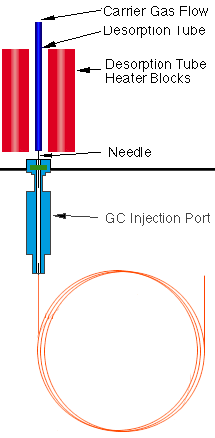
Figure 2 - Theory of Operation
Samples containing large quantities of water present a problem for the technique of Direct Thermal Analysis. These include samples, as fresh vegetation and other moisture containing samples. It may not be possible to analyze large samples sizes of these high moisture content compounds using this technique. When cryotrapping these samples, the water tends to form an ice plug at the front of the column and block the carrier gas flow through the column. This is visually evident by an increase in column head pressure or by a decrease in carrier gas flow through the Desorption System. However, the problem can be controlled by careful selection of sample size and column size. Larger diameter columns, as macrobore capillary columns (I.D. .53 mm) or packed columns, can be used due to their larger inside diameters; therefore, their ability to handle larger amounts of water without forming an ice plug is possible. Another alternative is to use a larger diameter precolumn such as a 1.0 meter 0.53 precolumn attached to the normal capillary column to solve this problem. For example, in the samples analyzed below, an entire pine needle contained sufficient water to plug the column; however, 1/2 (approx. 1 cm) of a single pine needle did not plug the column but still provided enough sample to exhibit peaks on the chromatogram.
A wide variety of samples were analyzed as described below. This paper is intended to show the wide diversity of samples capable of being analyzed using this technique. Each of the samples analyzed could easily be expanded to an extensive study within themselves by analyzing samples of similar nature. In addition to the data exhibited here, a complete mass spec analysis of each of the peaks eluted was conducted in order to identify each of the chromatograph peaks.
Results and Discussion
Direct Thermal Analysis of Food Products
I. Spices
The analysis of spices, as black pepper, oregano, basil, garlic and all the other dry spices, are easily analyzed using the Direct Thermal Analysis Technique. Since these samples have been previously dried, water is no problem in their analysis. One to two milligram samples of spices can be analyzed in the desorption tube at thermal analysis temperatures between 100 deg and 250 deg C. Chromatograms normally exhibit between 20 and 50 peaks.
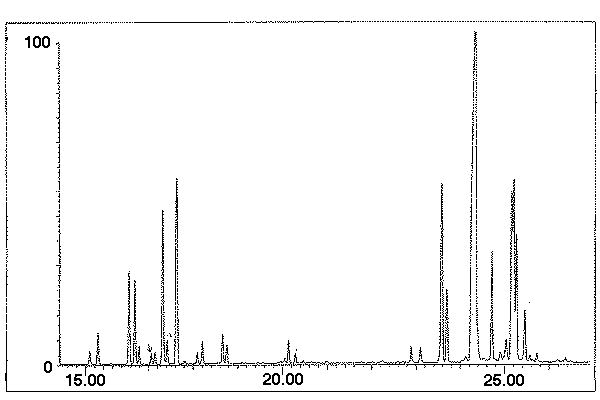
Figure 3 - Black Pepper (McCormick), 1.0 mg Thermal Analysis 150 deg C for 6 minutes.
Figure 3 is the chromatogram of McCormick brand black pepper. This sample was thermally analyzed at 150 deg. C, on column B on the GC/MS system. Mass spec analysis of the peaks indicated three groups of compounds. The first were the mono-terpenes with molecular weights of 136. These comprised many of the peaks between 15.0 and 18.0 minutes. The second group were the minor peaks between 18.0 and 21.0 minutes of molecular weight 154, the mono-terpene alcohols. The last group of peaks between 21.0 and 30.0 minutes had molecular weights of 204, the sesqui-terpenes. Other spices analyzed also exhibited similar types of compounds.
This technique could easily be adapted to develop a quality control method for pepper or other spice analysis. Its ease of use, small sample size, reproducibility, and the elimination of solvent extraction techniques make it a very preferable method of analysis. Selection of various thermal analysis temperatures will determine the sensitivity of the method and the molecular weight and boiling point of the components sparged from the sample.
II. Coffee
Coffee is analyzed much like the spice samples above. The unique feature of this method is that only 1 to 2 milligrams of sample is required. A recent article published in LC/GC (2) proposed a headspace method of analysis of coffee using 1.5 grams of coffee. The same results can be obtained by Direct Thermal Analysis using 1.5 milligrams of sample; this represents a 1000 fold increase in sensitivity over the headspace technique. Figure 4 is the GC plot of a 1.5 milligram sample of coffee on column B. The sample was thermally analyzed at 250 deg. C for 6 minutes. A series of samples were analyzed to determine the optimum thermal analysis temperature, for both decaffeinated and regular types of coffee. All temperatures between 100 deg and 300 deg C produced 20 or more peaks, but it was determined that a temperature of at least 250 deg C was required in order to detect caffeine (20.8 minutes in Fig. 4) in the samples. This technique has been utilized to compare regular and decaffeinated coffee and can easily be utilized to compare different types and brands of coffee as well as be incorporated into a quality control or screening method for the analysis of coffee or similar type samples.
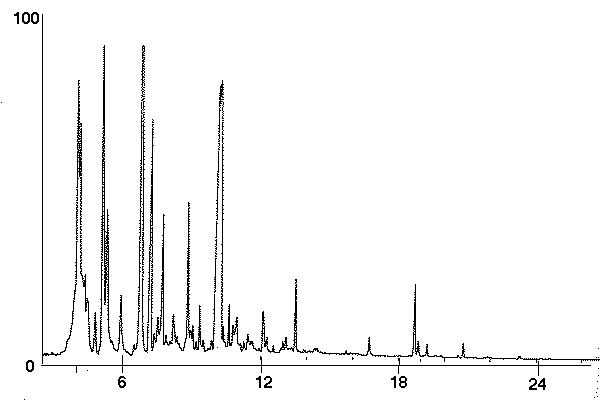
Figure 4 - Regular Caffeine Coffee 1.5 mg. Thermal Analysis 250 deg. C for 6 minutes.
III. Food Products - Roasted Peanuts
Figure 5 is the GC chromatograph of roasted peanuts. Approximately 2 milligrams of crushed roasted peanuts was placed in the GLT desorption tube and sparged for 6 minutes at 150 deg. C into the GC injection port. The chromatograph displays the results of analyzing the peanut on column B with the resulting peaks of the various oils and other volatiles present in the solid peanut sample. The ease of which this analysis can be completed without the need for any time consuming solvent extraction accentuates the significance of this technique.
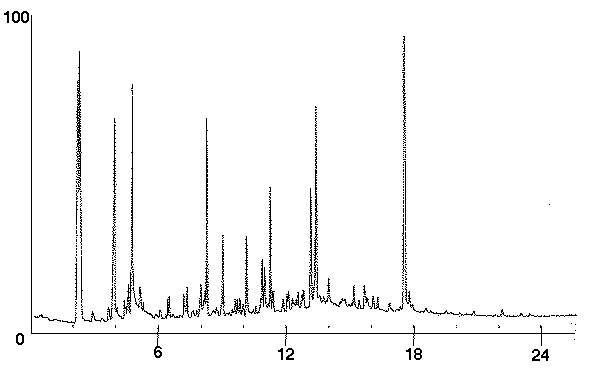
Figure 5 - Roasted Peanut, 2.0 mg. Thermal Analysis 150 deg. C for 6 minutes.
IV. Flavors in Foods
Figure 6 is the result of analyzing an artificially flavored candy sample using this technique. Approximately 2 milligrams of the candy sample were placed into the desorption tube and thermally analyzed at 150 deg. for 6 minutes into column B on the gas chromatograph. The resulting peaks from the various chemical flavors were eluted and analyzed via the mass spectrometer. Despite the gummy texture of the sample and its high sugar content, the flavor compounds and other volatiles present in the candy sample were easily separated and identified.
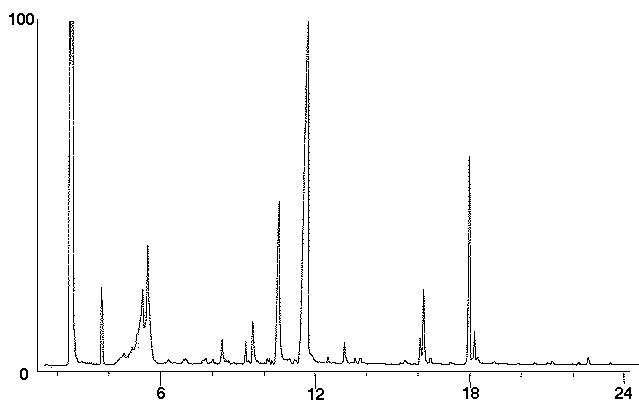
Figure 6 - M&M Mars Skittle Candy, 2.0 mg. Direct Thermal Analysis 150 deg.C, 6 minutes.
PACKAGING MATERIALS
V. Plastic Food Wraps
An extensive project is presently being undertaken on the analysis of plastic food wraps which are recommended by their manufacturers for the heating of food products in microwave ovens. Questions have arisen as to the contents of these packaging materials and the nature of the materials which might be leached into the food when used in a microwave oven to heat or cook food products. One to two square inches of the plastic wraps are placed directly into the GLT Desorption Tubes. They are then heated to 100 deg C (the temperature that these plastic wraps would be subjected to in a microwave oven) and sparged into the injection port of the GC. Column A was utilized on the H.P. 5971 to separate the components and then subsequently identify the components. Figures 7 and 8 are the results of two different brands of these plastic food wraps. The major peak in Figure 7 was identified as N-butyl Benzenesulfonamide, an antibiotic type compound. The major peak in Figure 8 was identified as BHT (Butylated Hydroxytoluene). In addition BHA (Butylated Hydroxyanisole) and a variety of paraffin type compounds were also identified.
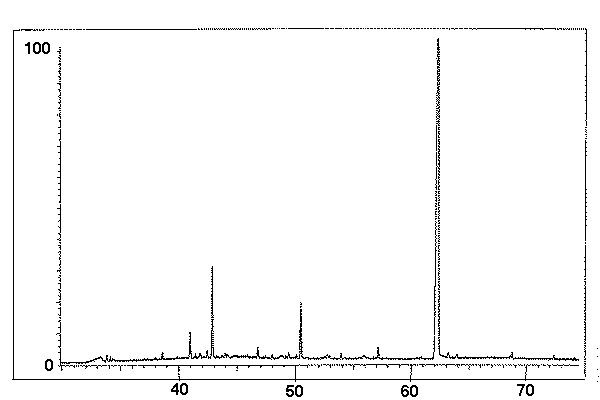
Figure 7 - Glad Cling Wrap, 2 sq. in. Direct Thermal Analysis 100 deg. C for 10 minutes.
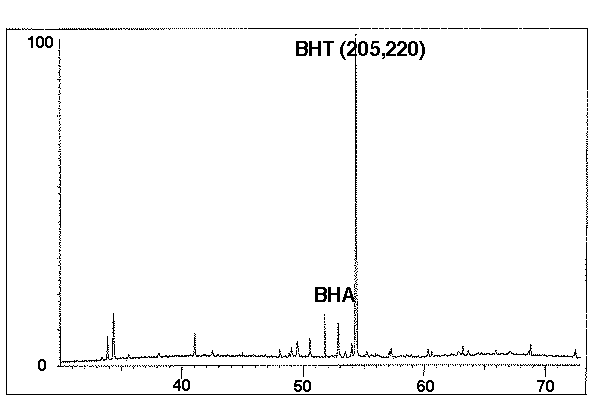
Figure 8 - Reynolds Wrap, 2 in. sq. Direct Thermal Analysis 100 deg. C for 10 minutes.
Additional data on the analysis of packaging materials utilizing the Direct Thermal Analysis technique has been conducted by Dr. Tom Hartman at Rutgers University as reported in the last edition of this newsletter (3).
MANUFACTURED PRODUCTS
VI. Powdered Laundry Detergents
Figure 9 is the chromatogram of Ajax brand powdered laundry detergent. Approximately 3 milligrams of the powdered soap was placed directly into the desorption tube where it was thermally sparged at 100 deg. C for 10 minutes into the GC injection port. It was analyzed on column A on the H.P. 5971 system. Approximately 25 distinctive peaks were detected which were subsequently analyzed via the mass spectrometer to attempt to identify the components. Several of the peaks were unidentifiable from our NBS library, however many of the peaks were readily identified. The compounds identified included a number of benzene derivatives and terpene base perfumes. Several other competing brands of laundry detergent were also analyzed. Each of the samples analyzed produced their own distinctive chromatogram. This technique could be used to analyze these type samples for the identification of their components and could easily be adapted into a quality control program.
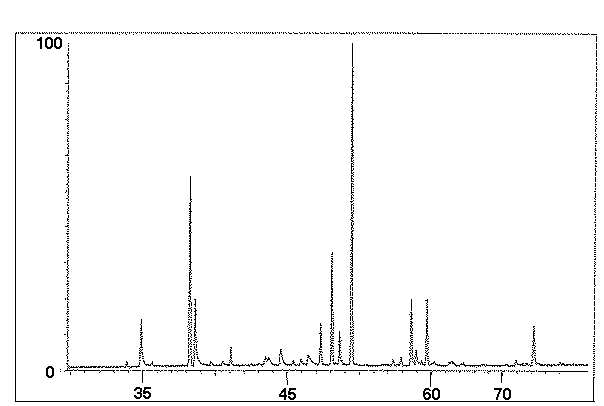
Figure 9 - Ajax Laundry Detergent, 1.5 mg. Direct Thermal Analysis 100 deg. C for 10 minutes.
VII. Synthetic Fibers - Rugs
Figure 10 demonstrates the usefulness of the technique for the analysis of synthetic fibers as those present in carpeting and rugs. Often after the installation of new rugs, drapes, etc. in a building, obtrusive odors are emitted for a period of time. In order to determine the identity of the chemical pollutants, a few short fibers from the synthetic material are placed directly into the GLT desorption tube and thermally sparged into the GC injection port and subsequently analyzed via the GC/MS system. This technique can be a very useful technique for the sampling and screening of rug samples to determine their environmental impact and to determine the source of the volatiles, i.e. either from the carpet or from the installation adhesive. The nylon carpet analyzed in Figure 10 was Thermally Analyzed at 200 deg. C for 10 minutes and produced more than 100 peaks in the chromatograph. Other synthetic fibers and commercial products used in homes and industrial buildings could be analyzed by this technique.
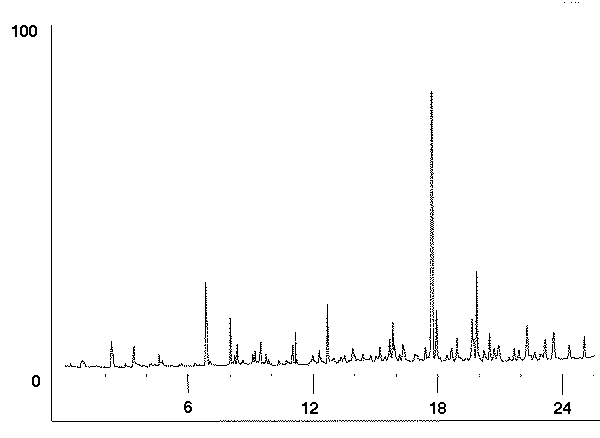
Figure 10 - Nylon Rug, 2 tufts. Direct Thermal Analysis, 150¡C for 10 minutes.
VIII. Construction Materials - Fir Plywood
Figure 11 is the chromatogram resulting from the analysis of 5 milligrams of Fir plywood including the glue layer. This sample was thermally analyzed at 150 deg C for 6 minutes. In a similar manner, other building products such as particle board, insulation, vinyl flooring, etc. could be analyzed by this technique to identify the sources of volatiles from products utilized by the construction industry.
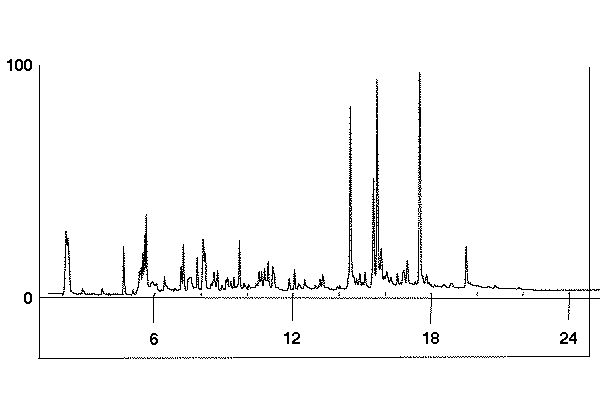
Figure 11 - Fir Plywood, 5 mg. Direct Thermal Analysis 150 deg. C for 6 minutes.
PHARMACEUTICALS
IX. Volatiles in Pharmaceuticals
Another application of Direct Thermal Analysis utilizing the Short Path Thermal Desorption System is the analysis for volatile residues remaining in pharmaceuticals after manufacture. The solid pharmaceutical material can be placed directly inside the GLT desorption tube and heated to a low temperature (100 to 150 deg C) to purge the volatile residues from the solid material into the GC injection port for subsequent analysis.
Figure 12 is the result of analyzing Bayer Aspirin utilizing this technique. The sample was Thermally Analyzed at 100 deg. C for 10 minutes into the GC injection port utilizing column A to separate the components and to subsequently analyze each of the peaks on the mass spectrometer. Out of the resulting peaks in the figure, none of these peaks constitute aspirin, phenacetin or caffeine. The resulting peaks are the residues remaining after the manufacturing process. By analyzing at higher temperatures, additional compounds may be emitted, but the active constituents might also be sparged into the GC in high concentration and this should be avoided in order not to overload the GC column.
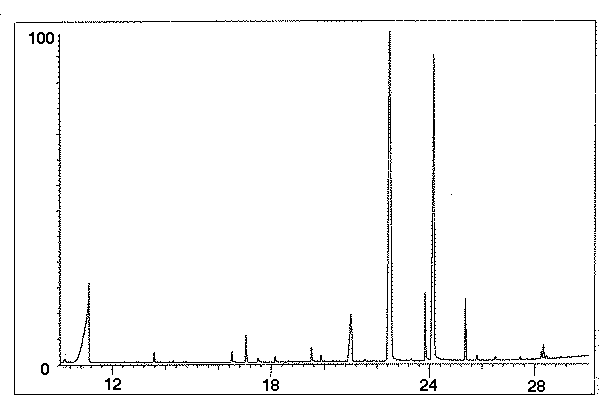
Figure 12 - Bayer Aspirin, 2.0 mg. Thermal Analysis 100 deg. C for 10 minutes.
NATURAL PRODUCTS
X. Wood Sample
Figure 13 is the GC chromatograph of approximately 1 mg of aromatic cedar wood placed directly into the GLT desorption tube. The sample was sparged for 10 minutes at 120 deg. C into the GC injection port. Subsequent analysis via GC/MS identified many of the peaks as terpenes and sesqui-terpenes. Many of the same compounds were also identified in the cedar needle which had been analyzed previously when we conducted studies on pine needles. Additional analysis of less aromatic woods such as Cherry also proved an effective method of analysis for these materials.
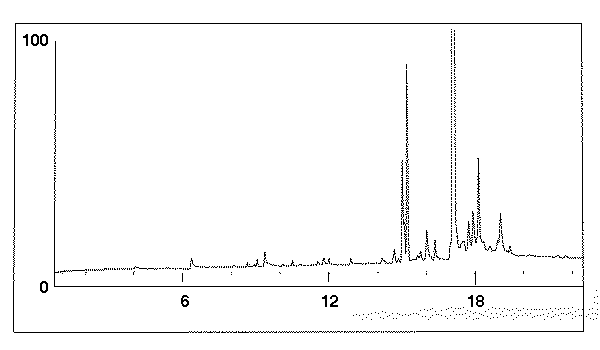
Figure 13 - Cedar Wood, 1 mg. Direct Thermal Analysis 120 deg. C for 10 minutes.
XI. Pine Needles
Pine needles from a variety of different species of pine trees were analyzed by placing approximately 1 cm lengths of a single pine needle into the Desorption Sample Tube. Larger sample sizes caused ice plugs to form at the front of the GC capillary column. Figure 14 is a sample of the GC analysis of a white pine needle.
The sample was Thermally analyzed at 200 deg. C on column A on the GC/MS system. As in the black pepper sample described above, a variety of terpenes (m.w. 136), terpene alcohols (m.w. 154), and sesqui-terpenes (m.w. 204) comprised the majority of the peaks in the chromatogram. Comparison of this white pine needle with the needles of other varieties of pine trees such as blue spruce, white spruce, etc., provided unique chromatograms indicative of each type of tree.
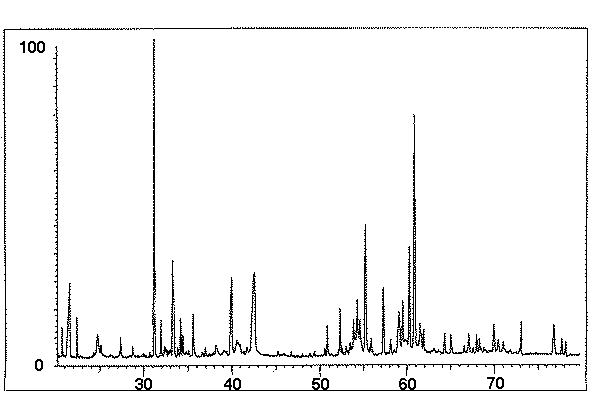
Figure 14 - White Pine Needle, 1 cm. long. Direct Thermal Analysis, 200 deg. C for 10 minutes.
FORENSIC
XII. Arson
Figure 15 is the result of placing a few threads from the wick of a Molotov Cocktail into the GLT Desorption Tube. The sample was sparged into the GC injection port at 200 deg. C for 6 minutes and the resulting chromatograph indicated the results. Similarly samples of wood or flooring from the crime scene of a suspected arson could be placed directly into the GLT desorption tube and analyzed via this technique.
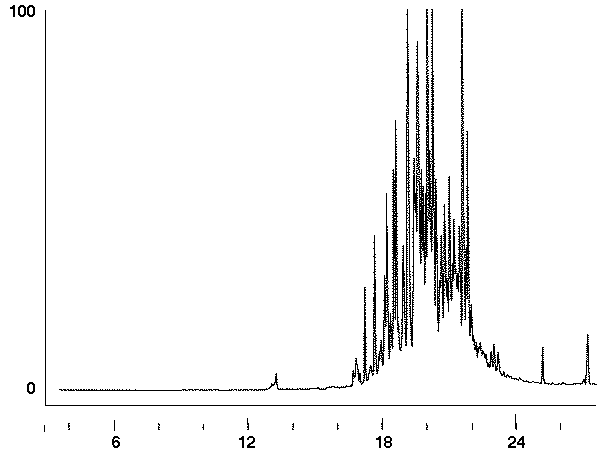
Figure 15 - Molotov Cocktail, Wick Threads. Direct Thermal Analysis, 200 deg. C for 10 minutes. (Courtesy NJSP)
Conclusion
The technique of Direct Thermal Analysis is an extremely powerful technique for the analysis of solid samples. By being able to analyze samples directly without any chemical extraction or other sample preparation, the use of chemicals such as chloroform are eliminated and much setup time is saved. In addition, by being able to sparge the sample directly into the GC injection port, the maximum sensitivity of analysis is obtainable comparable to other techniques. The above described applications demonstrate only a few of the possible applications, and is meant as a demonstration of the diversity and importance of this technique.
References
(1) The Mass Spec Source, Vol. XIII, No. 4, Dec. 1990, Short Path Thermal Desorption - Design and Theory, pg. 22-28.
(2) LC/GC, Vol 8, no. 12, Dec. 1990, Headspace Gas Chromatography-Fourier Transform Infrared Spectrometry for Monitoring Volatiles in Commercial Brand Coffee, pg. 920-926.
(3) The Mass Spec Source, Vol. XIII, No. 4, Dec. 1990, Detection of Off-Odors in Food Packaging Films, pg. 30-33.

